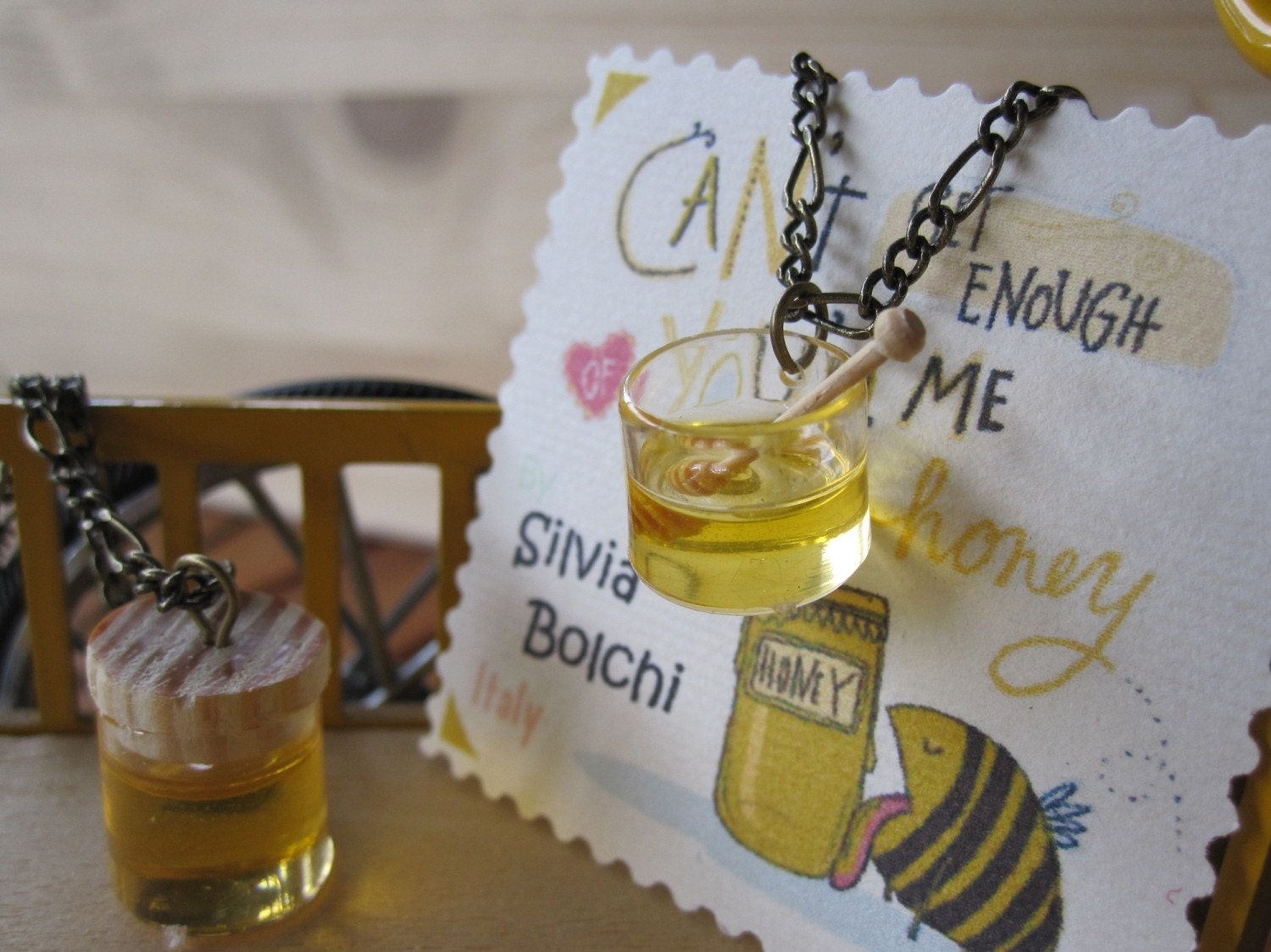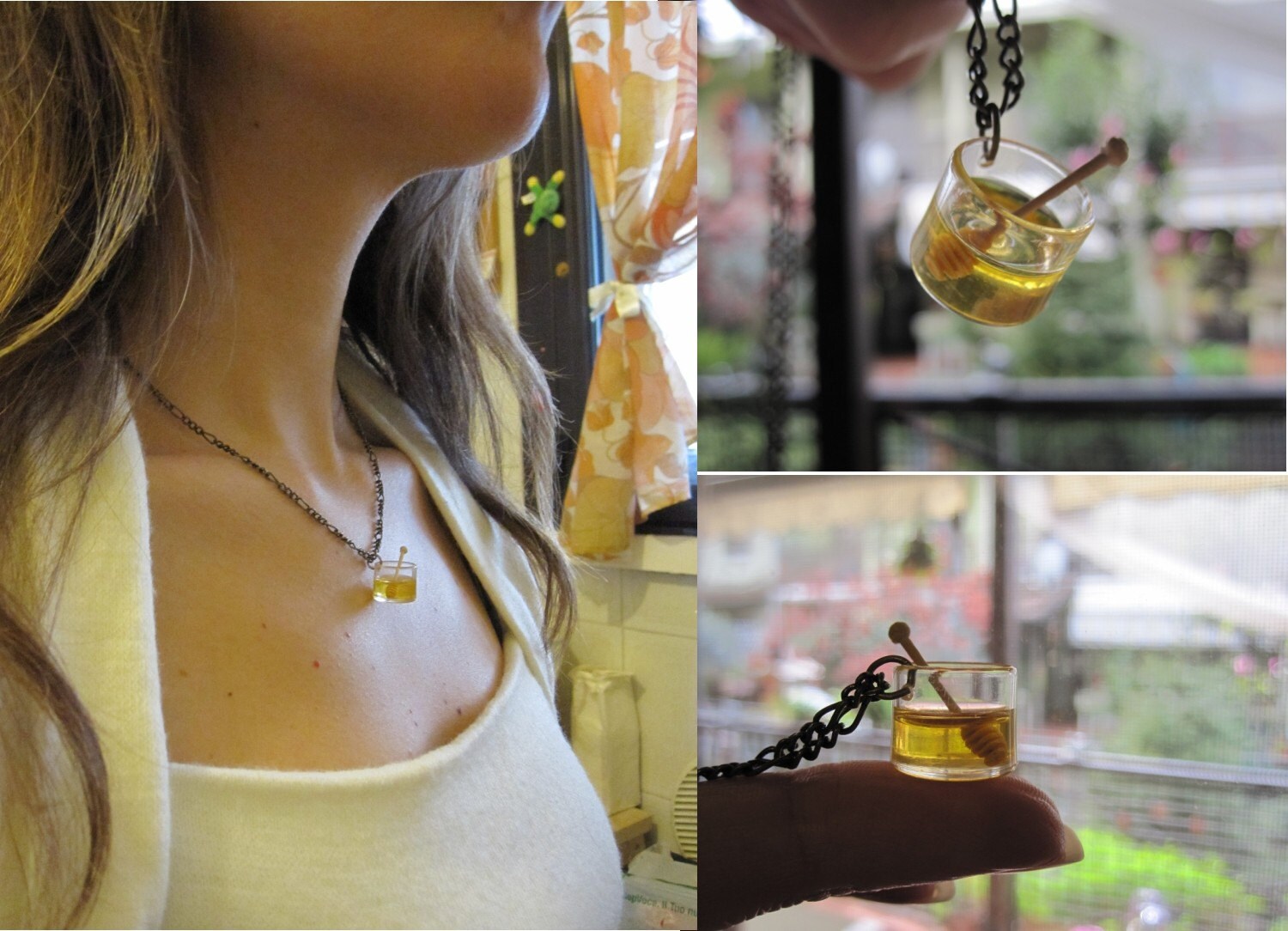Oh! Honey Honey! a tiny honey jar and wood spinner.
Our pendant of the days comes to us from The Butterflie's Shop. Isnt it the cutest thing? It is so different from the many pendants I've seen. It is the perfect size and as we can see it catches the light beautifully. The pendant (tiny jar&spinner) is long 1.5cm. Have you ever seen a spinner sooooo tiny? :)
Our pendant maker, Silvia Bolchi, has been makin dollshouse miniatures from 1995. Each piece is a one of a kind made by hand.
Please visit her website at http://www.sogniinminiatura.com/ to see her miniature works!
Process of Making Honey
The worker bees use their long, tube-like tongues to suck nectar out of flowers and plants, which they then collect in their 'honey stomachs'. Bees are perfectly equipped to carry out this job, as in addition to the regular stomach, they have a stomach (the honey stomach), which is meant especially to store the nectar they collect. The honey stomach has the capacity to store almost 70 mg of nectar and when full, almost equals the weight of the bee. On an average, honeybees visit between 100 and 1500 flowers, in order to fill their honey stomachs.
Once the bees return to the hive with the nectar, it is then passed on to the other worker bees, who suck the nectar from the honeybee's stomach using their mouths. They then 'chew' the nectar for a while, and this is when the bees' digestive enzymes break down the complex sugars into simple sugars. This ensures that the honey stored within the hive, is easily digestible for the bees, and less likely to be attacked by bacteria. It is then stored in cells throughout the honey comb. At this point, the nectar still has a fairly high water content, which causes the natural yeasts to ferment the sugars. Thus, the next stage in the process of making honey has all the bees fanning the nectar with their wings, which creates a draft and helps the excess water to evaporate. The nectar thus becomes thicker, and the high sugar concentration prevents fermentation. The honey at this stage is called ripe honey, and if removed from the hive and properly sealed, can have a long shelf life. The bees then seal off the cells with wax and the honey is stored until needed.
From Buzzle.com
Some of the Health Benefits of HoneyHoney is composed of sugars like glucose and fructose and minerals like magnesium, potassium, calcium, sodium chlorine, sulphur, iron and phosphate.
It contains vitamins B1, B2, C, B6, B5 and B3 all of which change according to the qualities of the nectar and pollen. Besides the above, copper, iodine, and zinc exist in it in small quantities. Several kinds of hormones are also present in it. Approximately one half of the human diet is derived directly or indirectly from crops pollinated by bees. Today honeybees are an essential part of a healthy agriculture economy.
If you have allergies, honey can be beneficial. If you eat honey that is local to your area, it may help prevent your seasonal allergies. Bees use the pollen from local plants and eventually it ends up in your honey.
Honey may also be good for your skin. It has the ability to attract water. It is also safe for sensitive skin. You can use it as a moisturizing mask for your skin as well as your hair. To use it as a conditioner, mix the honey with olive oil. Be sure to wash your hair thoroughly before you go outside. From Bees-online.com




No comments:
Post a Comment
Let us know what you think. We'd love to hear from you.